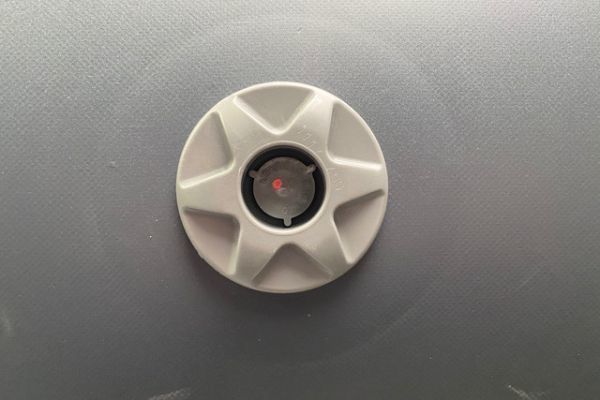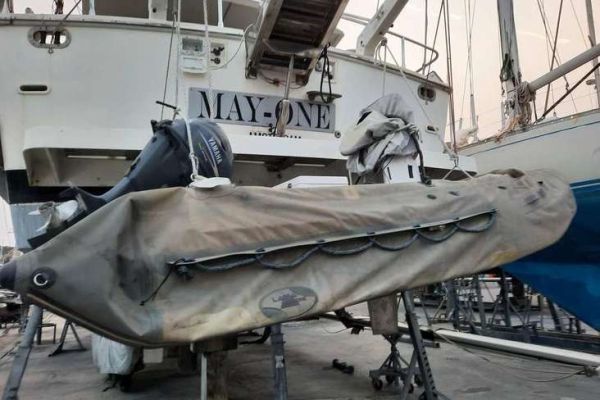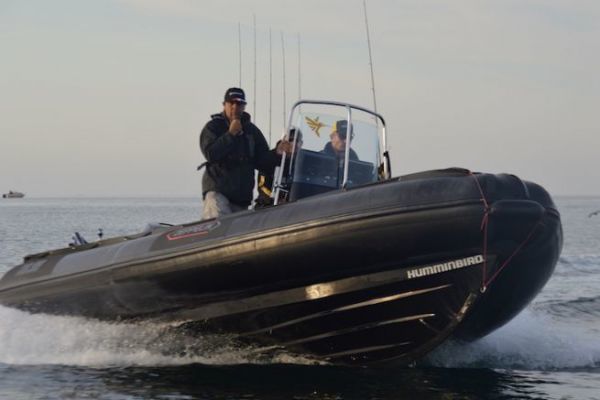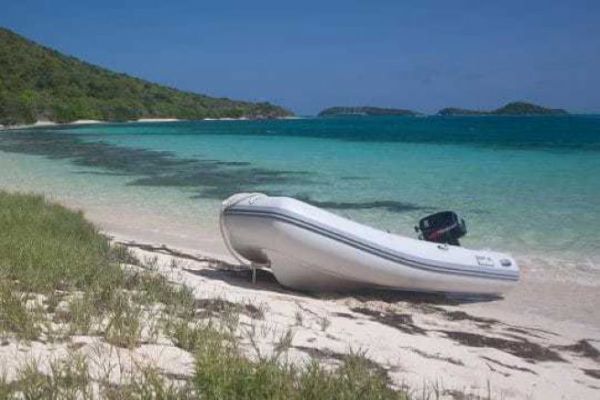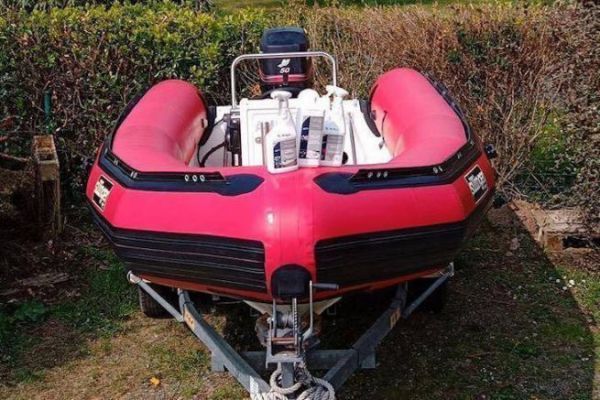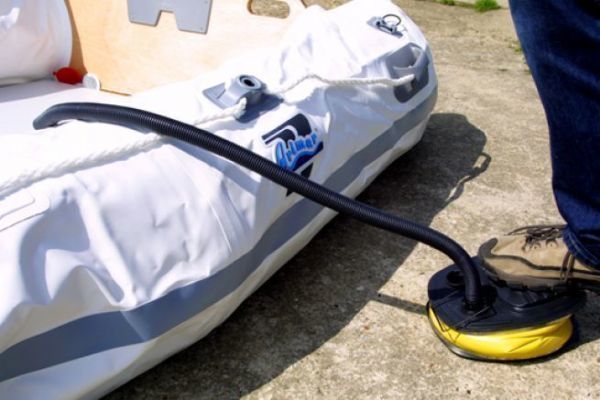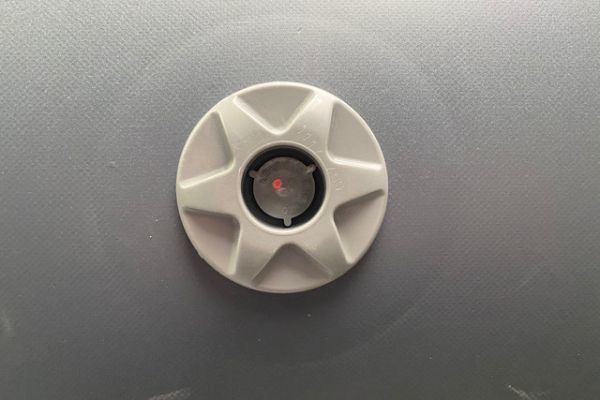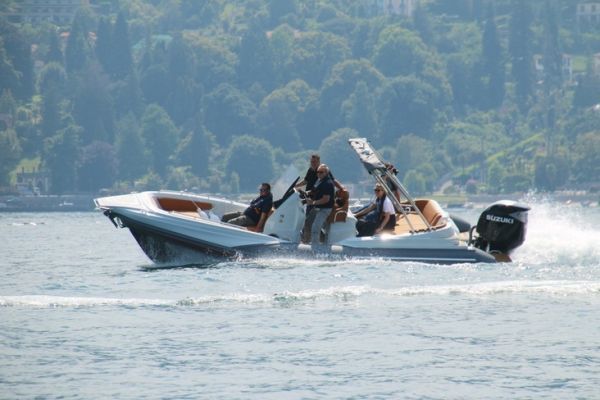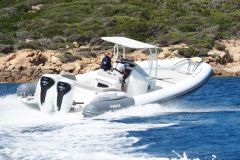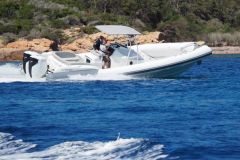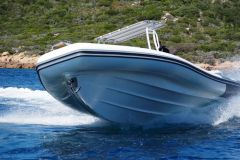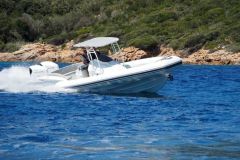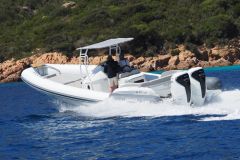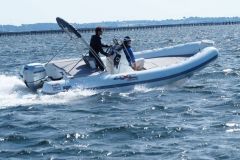Regulate navigation pressure
Float pressure is generally indicated on the boat's CE plate. For most boats, this is between 200 and 250 millibars. However, this pressure tends to vary according to the temperature in which the boat operates. Float pressure must therefore be adapted to the operating pressure. When sailing, it's important to adapt the pressure to the correct operating pressure. Sailing under-inflated, for example, affects both the boat's seaworthiness, which will be reduced, and the floats themselves. The fabric may come unstuck and the float may be damaged.
To find out the correct navigation pressure, Simon Marette advises : "To take account of the water temperature, I'd do it between 15 and 20 minutes after going out. It's a matter of common sense to regulate the pressure of your floats, just as it is to equip yourself with a suitable inflator with pressure gauge, whether manual or electric. If you set off in the morning at 5 a.m., the temperature will be 15°C. During the day, the temperature will rise and so will the pressure. To avoid having to regulate pressure on a daily basis, some RIBs are equipped with pressure relief valves. These can also be added if they are not fitted as standard. In my opinion, this is essential. If there's no pressure relief valve, it pulls on the structure, gluing and welding."
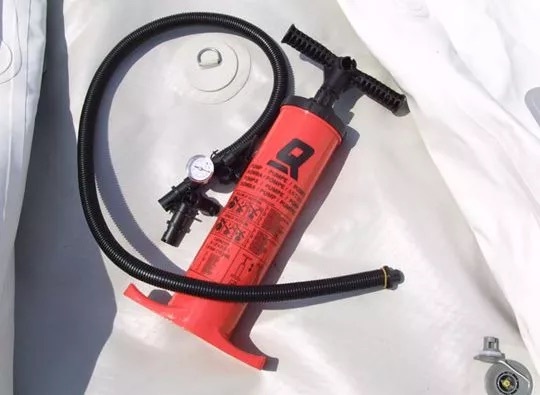
Regulating pressure for road transport
With the exception of transporting a RIB that is not roadworthy, you should never deflate your floats when transporting your boat on a trailer. In the first case, it is mandatory to do so, so that the size of the boat, once deflated, is the right size. In these cases, as Simon Marette explains, it's best to follow the correct procedure. The float needs to be evacuated so that it can be pressed against the hull to prevent it from flying sideways.
When transporting a RIB to road gauge, we can release a little pressure so that the floats stay in shape, but can absorb large temperature rises.
Because, as Simon Marette explains, float pressure depends on temperature. "In the sea, the perceived temperature is lower. The water creates a liquid cooling effect, which reduces the air temperature in the floats. On leaving the water, on the black asphalt in full sun, the temperature can easily rise to over 40°C, or even higher with a dark color. The air temperature in the float will rise significantly, and so will the air pressure. Pressure must therefore be regulated according to the situation and the season. It should also be pointed out that the higher the temperature, the more brittle and less resistant to tearing the bonds become."
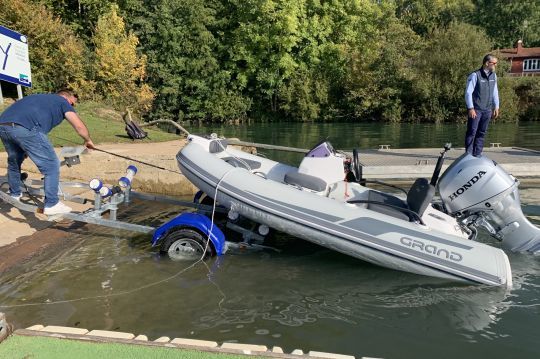
Regulating pressure for storage
As Simon Marette explains, it's not uninteresting to adopt a storage pressure of 150 millibars. He explains: "In concrete terms, 1°C of temperature variation creates a variation of 4 mbar. If we have a temperature difference of 20°C, we'll gain or lose 80 millibars in pressure! If the float pressure is 220 millibars, and the temperature rises from 20 to 40°C, we'll exceed the working pressure and reach 300 mbar."
It's true that temperature differences vary according to geographical area. However, vigilance is essential at all times. If the boat is stored over winter, the temperature will drop and the float will eventually deflate. You'll need to re-inflate the float over the winter, to avoid leaving it slack, but quickly adapt it when temperatures rise again at the start of the season.
Simon Marette concludes: "Incorrect storage is just as bad as incorrect use. Ideally, if the boat is stored on a pontoon, it should be tarpaulin-covered, to ensure natural ventilation. In the garden, it's the same: you need a tarpaulin to avoid direct exposure to the sun, but also to the moon. Avoid garden tarpaulins, which are certainly inexpensive, but whose color can rub off on the floats. Prefer dedicated or made-to-measure tarpaulins."

 /
/ 